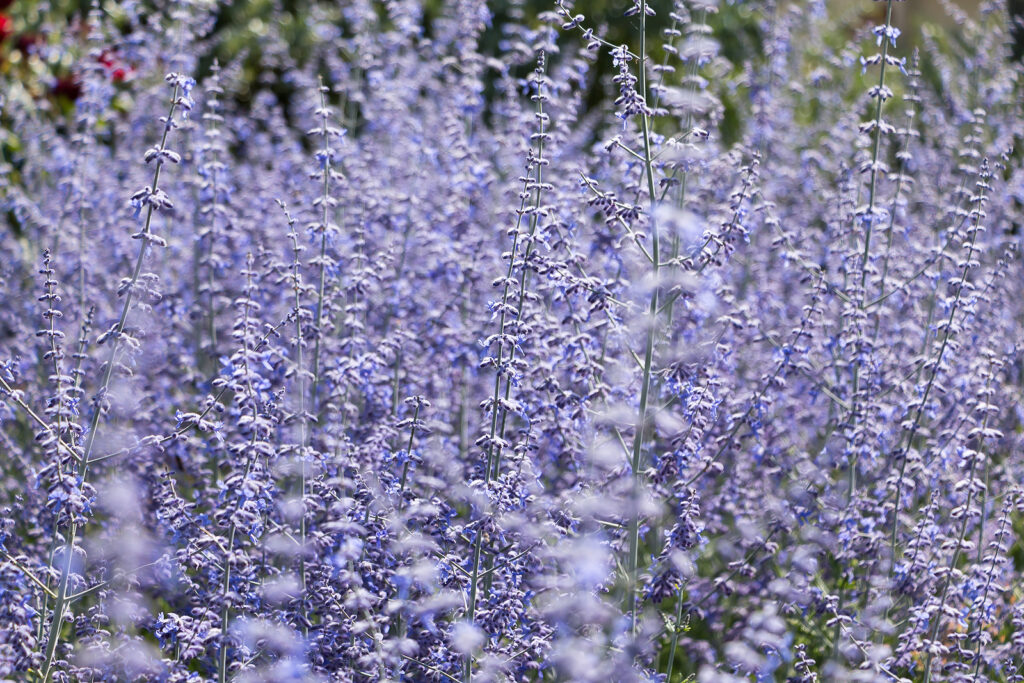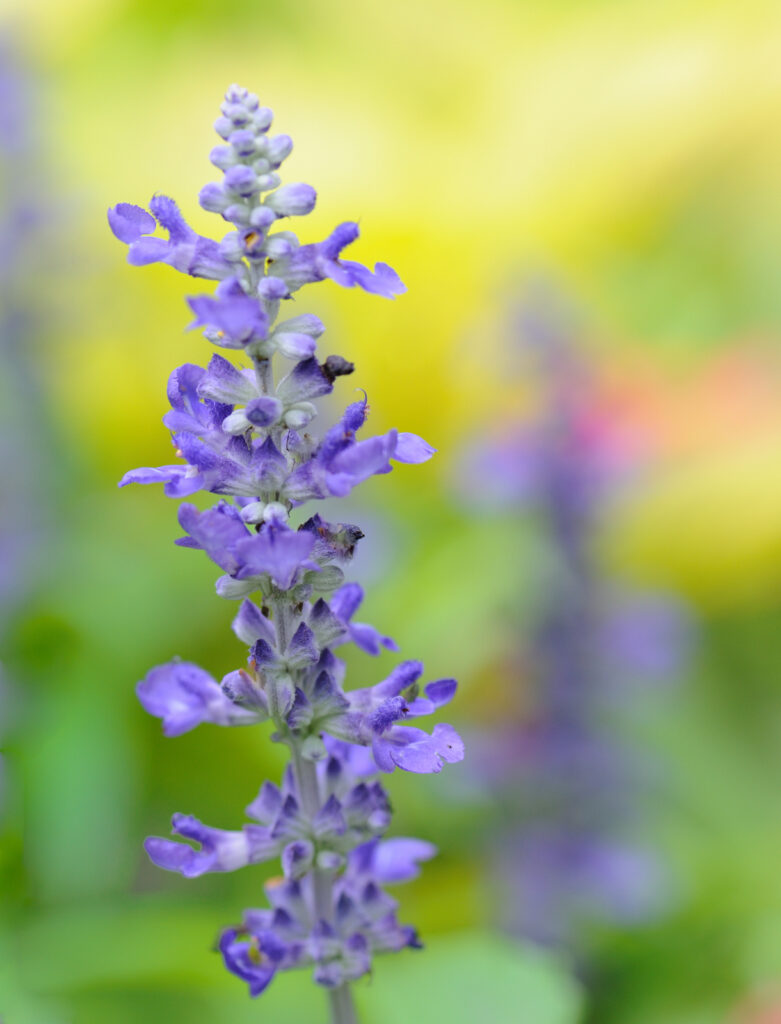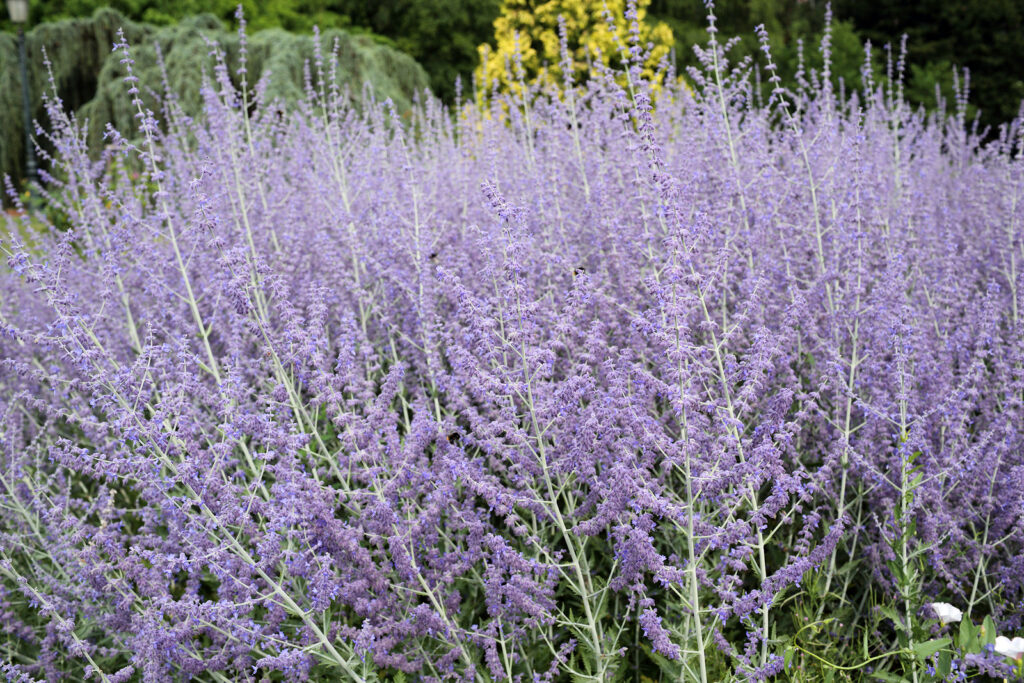Perovskia–commonly called Russian sage–bears airy heads of lavender-blue flowers from late summer to fall. Perovskia is a woody-based perennial with erect stems covered in deeply divided, grey-green aromatic leaves. Stems are bare white in winter.
Perovskia is a good choice for planting in a mixed or herbaceous border. Perovskia is a genus of seven species of deciduous subshrub. They are native to rocky sites from Central Asia to the Himalayas.
Perovskia will grow in soils that are sandy, rocky, and other soils low in fertility, as well as regular garden soil, any soil that is well-drained.
Perovskia can grow in place indefinitely.

Get to know Perovskia
- Plant type: Perennial
- Growing Zones and range: Zones 3 to 9
- Hardiness: Hardy to -20°F (-29°C)
- Height and width: 3 to 5 feet (1-1.5m) tall; 2 to 4 feet (.6-1.2m) wide
- Foliage: Opposite, finely cut and deeply divided, lace-shaped leaves are gray-green and aromatic
- Flowers: Airy sprays of tiny blooms
- Flower color: Blue-lavender
- Bloom time: Midsummer through fall
- Uses: Mixed border
- Garden companions: Coreopsis, purple coneflower, fountain grass, Autumn Joy sedum
- Common name: Russian Sage
- Botanical name: Perovskia atriplicifolia
- Family: Lamiaceae
- Origin: Central Asia and the Himalayas
Where to plant Perovskia
- Plant Perovskia in full sun.
- Grow Perovskia in sandy, loose, well-drained soil.
Perovskia uses and companions
- Grow Perovskia in a mixed or herbaceous border.
- User Perovskia with ornamental grasses and in naturalistic sites.
- Good garden companions include Achillea, Artemisia, Coreopsis, Limonium latifolium, Oenothera, Sedum, Zauschneria.

When to plant Perovskia
- Set Perovskia in the garden in spring.
Planting and spacing Perovskia
- Space Perovskia 2 to 4 feet apart.
How to water and feed Perovskia
- Perovskia grows best with moderate moisture; mature plants are drought-tolerant.
- Fertilize Perovskia lightly if at all.
Perovskia care
- Stake Perovskia if needed.
- Perovskia is usually pest-free.

Perovskia propagation
- Perovskia seeds germinate in 1 to 4 months at 60º to 65ºF (15º-18ºC).
- Root softwood cuttings in late spring or semi-ripe cutting in summer.
Perovskia varieties to grow
- Perovskia atriplicifolia, Russian sage, upright subshrub with gray-white shoots and ovate, deeply cut silvery-gray-green leaves; small tubular, violet-blue flowers borne in tall panicles; grows to 4 feet tall.
- P. ‘Blue Spire’ grows to 4 feet tall; and bears tubular, violet-blue flowers in panicles.
- P. ‘Hybrida’: upright shrub with deeply cut gray-green leaves that bears tubular dark lavender-blue flowers in tall panicles.















